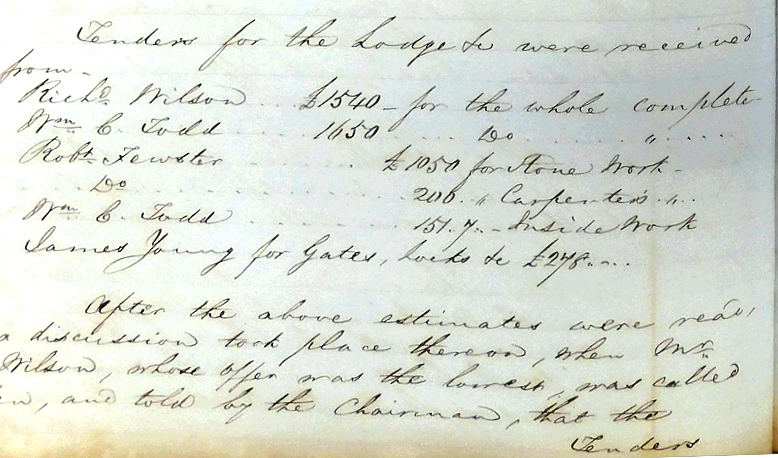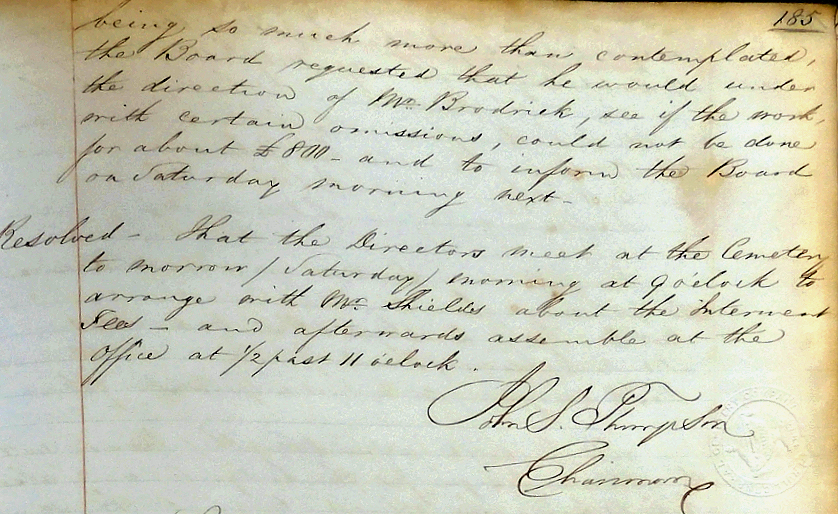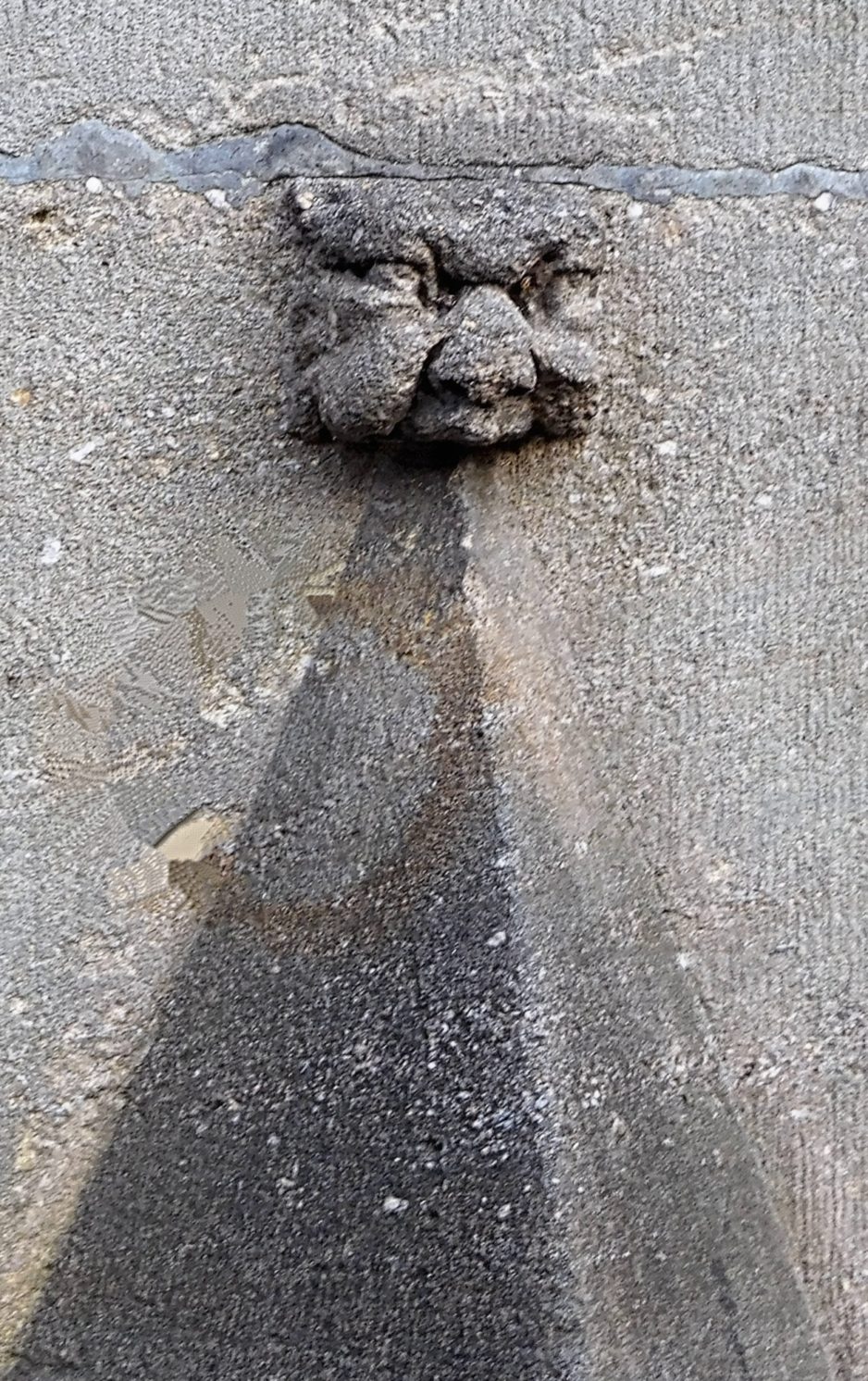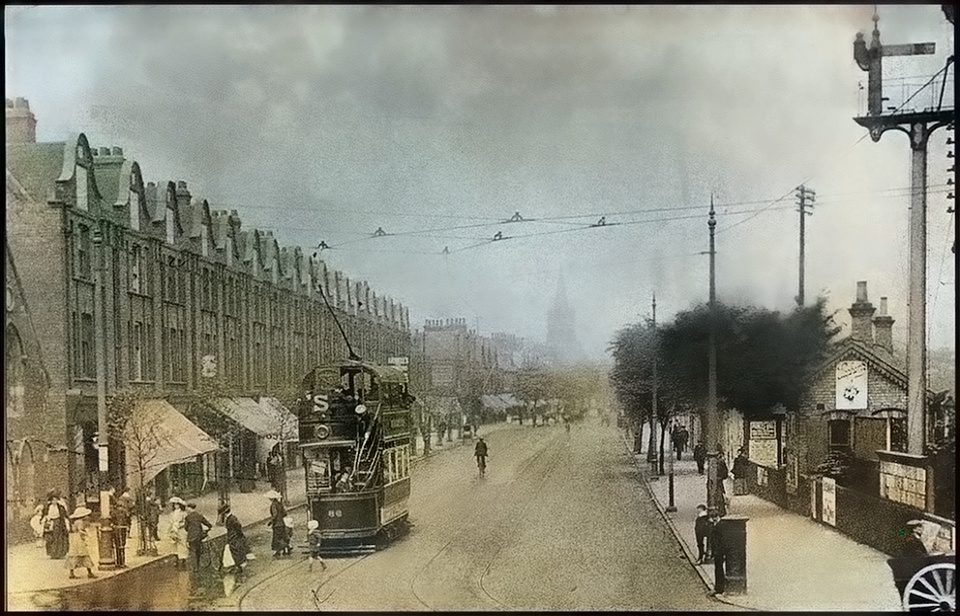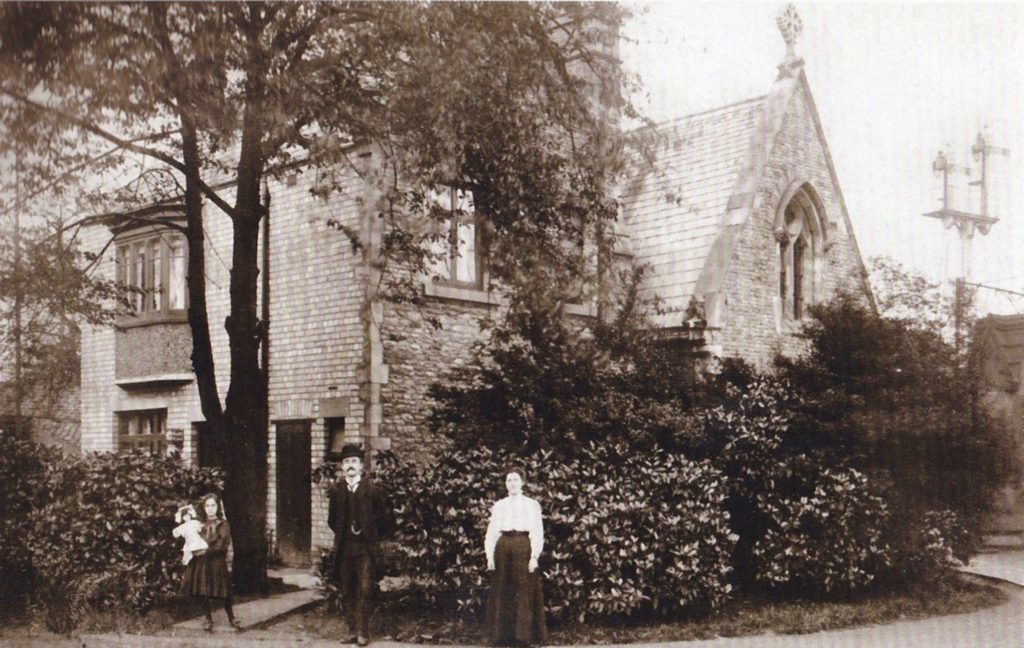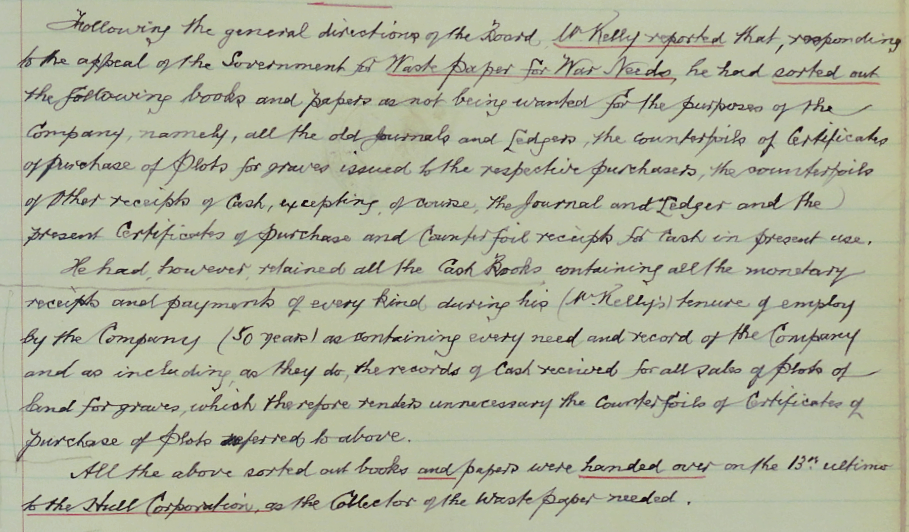11th May 1854
A special piece of land in the cemetery celebrates its anniversary on this date. The plot known as the Quaker burial ground began with this entry in the Company’s minute book. After some lengthy negotiations the Society of Friends, often known as Quakers, signed the lease. The lease was for 999 years.

The negotiations for this piece of land began in July 1848. This was only just over a year after the cemetery opened. The Quakers wanted to lease a strip of land on what was the frontage of the cemetery. It would have faced on to Princes Avenue and is now the site of the shops. The Company rejected this. They did not want the drainage at the front of the cemetery site tampered with. One has to remember that running along the south side of the cemetery was Derringham Dyke. This ran all the way to Cottingham Drain alongside Queen’s Road. The cemetery culverted the Dyke but only at the cemetery’s entrance.
The following month another offer arrived from the Quakers. This offer was to take a lease on ‘part of the far field’ as their burial ground. The offer was accepted. At this time the cemetery ended roughly in line with the Cholera Monument. It owned the further 7 or 8 acres westwards, but that land had not been developed. John Shields was tasked with marking the new burial site out.
Why the delay?
And yet, 7 years elapsed between the agreement in 1848 taking place, and the lease being signed. Why?
Two reasons suggest themselves for this. Finance obviously was an important factor. The composition of the Society of Friends was broad. It took members from all classes. However, a reasonable proportion of them would surely have been from the middle class. The Society of Friends was therefore financially viable. It would also have looked after its funds. And in 1848 it didn’t need to sign the lease then. Which leads to the second reason.
The second reason was more important. The original burial ground for the Quakers, Hodgson Street, was still open. It finally closed in the year that they clinched the deal above. The closure was imposed by a Parliamentary Order in Council in 1855. This Act was known to be coming. With the passing of the Public Health Act of 1848 and the Metropolis Act of 1850, burials were regulated much more closely. The Metropolis Act was rolled out across the country. By 1855 it was Hull’s turn. At that time the Quakers had to act. And the entry above shows that they did.

Pete Lowden is a member of the Friends of Hull General Cemetery committee which is committed to reclaiming the cemetery and returning it back to a community resource.


